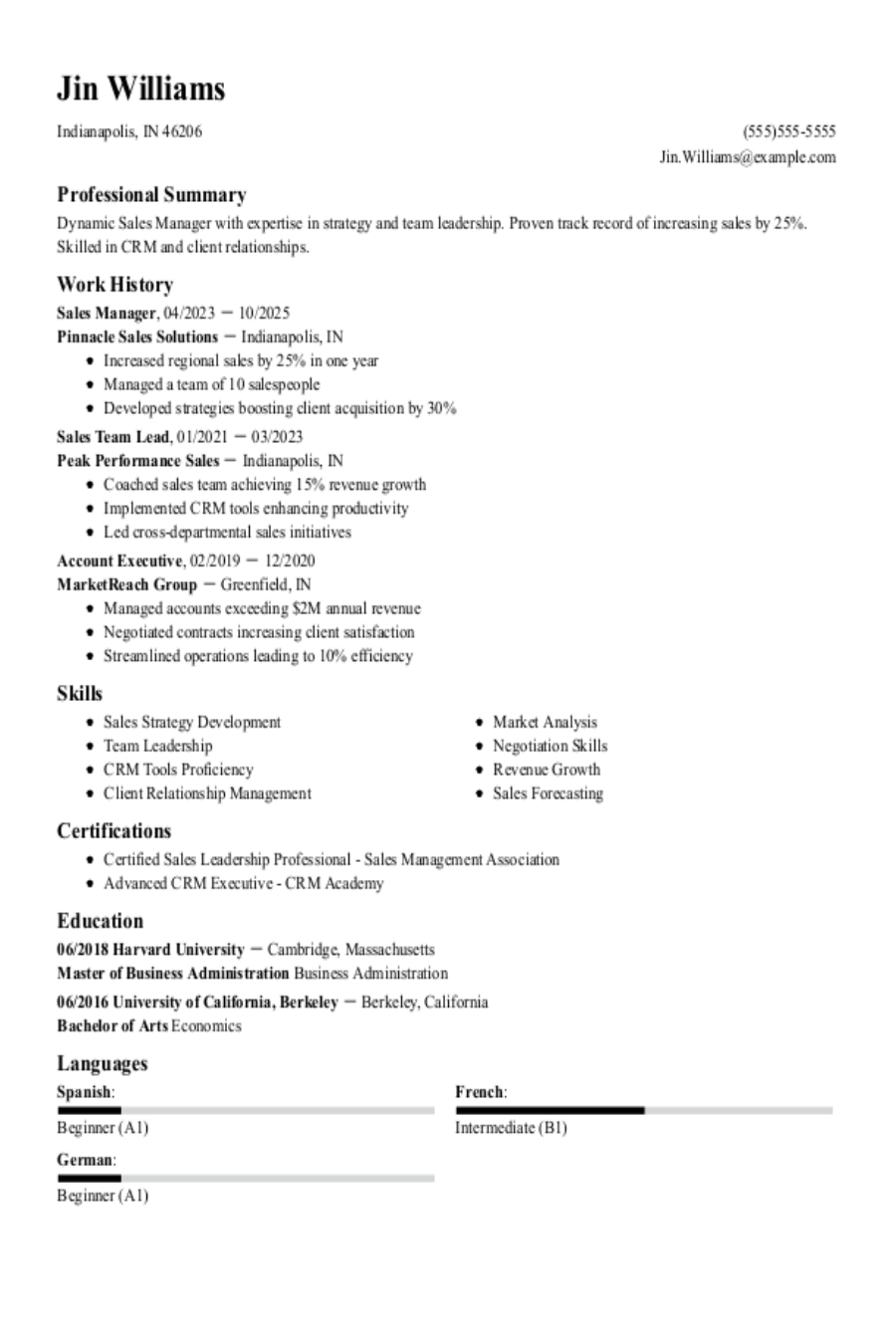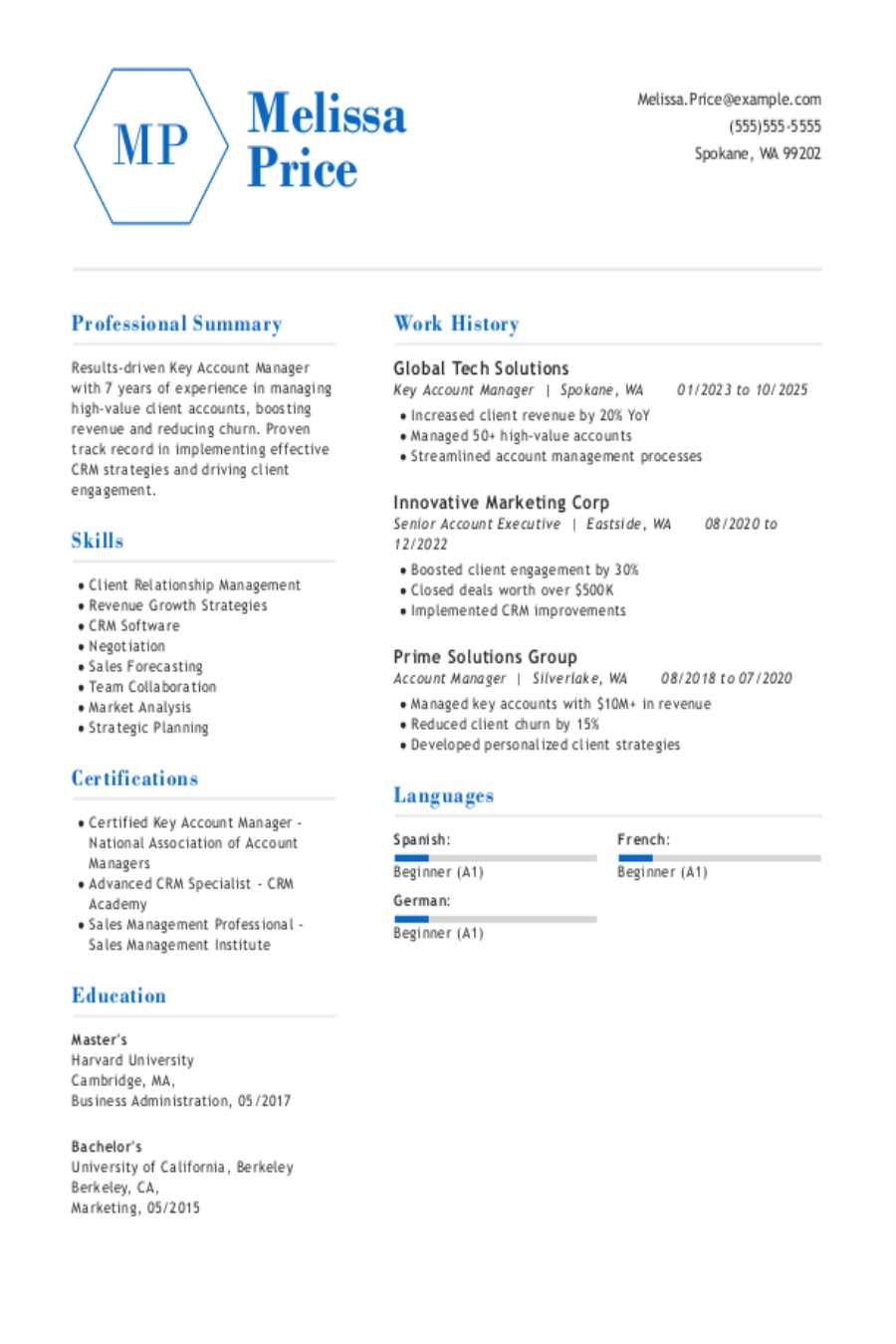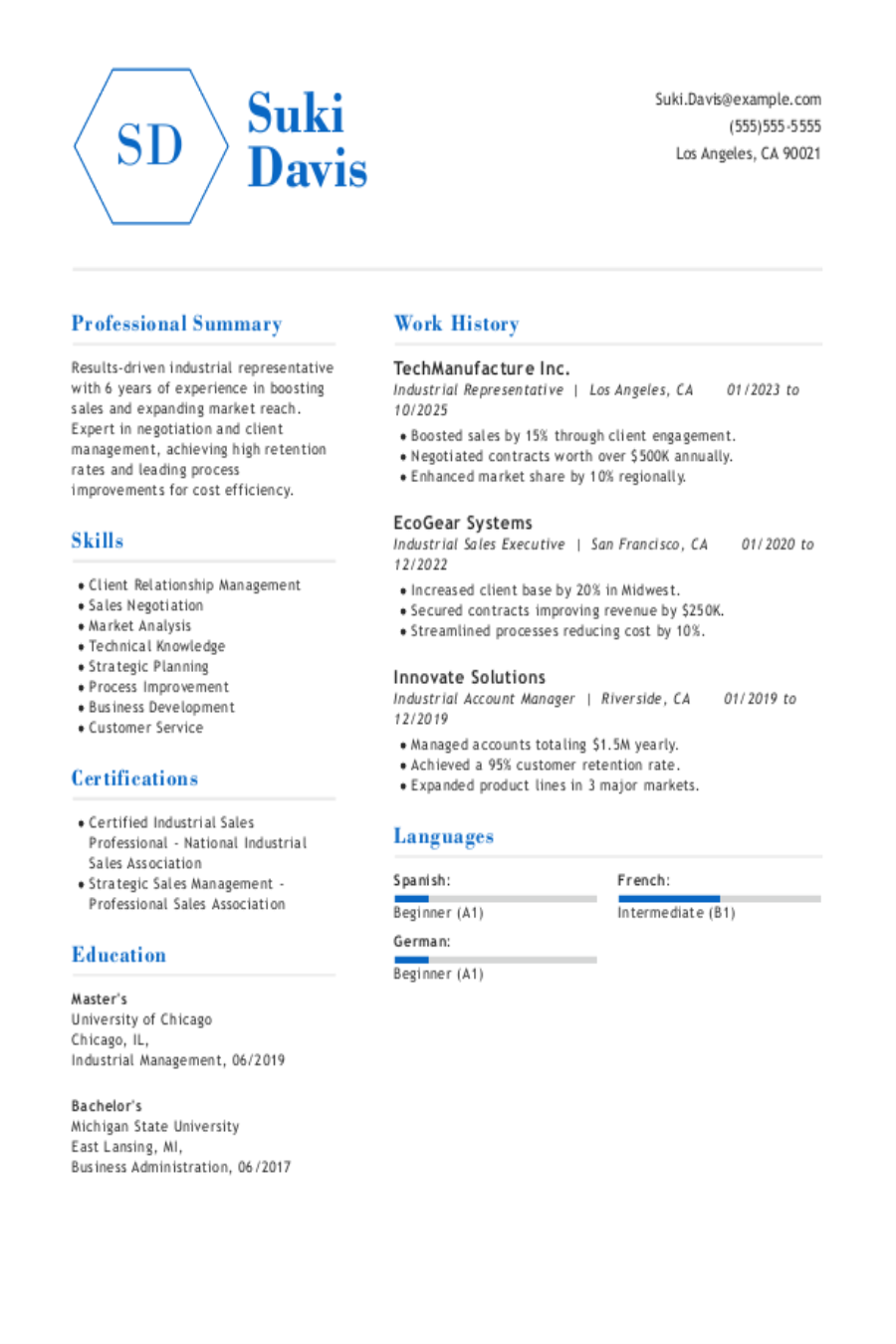Table of contents
When it's time to apply for the opportunity you've been hoping for, a well-written resume can get you far, but your application isn't truly complete without a persuasive cover letter. To set yourself apart from the competition, you need a cover letter that tells your story efficiently and gives employers a sense of why you're the best choice for the role. But how do you know what to include in a cover letter and what to save for the interview? Our guide has you covered.
Our guide breaks down:
- What the purpose of a cover letter is
- What sections to include in a cover letter
- What information to include in the body of your cover letter
- Tips for writing an impressive cover letter
- A cover letter sample to help you get inspired to start writing
Ready to start on your cover letter right away? Use our Cover Letter Generator to walk you through each step of the writing process. With the help of AI-assisted content suggestions and stylish templates, making a captivating cover letter is fast and easy.
What Is the Purpose of a Cover Letter?
You might be thinking, "I already built my resume, do I have to write a cover letter too? Doesn't my resume already provide a detailed overview of my experience and skills?" It's a fair question! But resumes and cover letters aren't quite as similar as you might think.
While a resume is designed to be a simple and clearly organized overview of your qualifications that employers can read at a glance and return to as a reference, your cover letter is more focused on communicating with employers. Sure, you may still talk about some of the same jobs or skills as your resume, but it's better to make your cover letter unique and avoid repeating information from your resume.
So, what is a cover letter for? A cover letter is your introduction to the employer. It exists to give you a chance to explain in your own words why you fit the role and why you're interested in pursuing it. Cover letters aren't organized as rigidly as resumes are, so as long as you have the cover letter basics down, you have plenty of freedom to say anything on your cover letter—just try to stick with details that will give employers a sense of your accomplishments and skills.
Some employers will explicitly require a cover letter from their applicants. In these cases, an application without a cover letter is unlikely to succeed. But even if the employer doesn't request one, a cover letter is often expected and can go a long way toward conveying your interest and unique capabilities.
What Sections Belong in a Cover Letter?
A cover letter might be more fluid than a resume, but there are still several basic sections that your letter should include. These are the key elements to include in a cover letter:
- A cover letter header: This goes at the top of your cover letter. Make sure that your header includes your name, city, state, phone number, email address, and any other relevant links that you wish to include, such as a LinkedIn profile or a portfolio.
- The employer's contact information: After listing your name and contact information, include the employer's details as well. List the name of the hiring manager or recruiter you're trying to contact, the name of the organization, their phone number, and their email address.
- A polite salutation: Your cover letter is a letter and needs to be addressed to someone. Research the role to figure out who will be reading your letter, and address it to them by name. If you can't find a name, "Dear hiring manager" is OK as an alternative.
- An introductory paragraph: Give the employer a brief overview of your career. This is the first chance the employer has to get to know you, so in a few sentences, you should convey your strengths and highlight what you bring to the table.
- Several body paragraphs: After your introduction, describe your career in detail and give the employer a chance to understand why you've chosen to apply to this role. More on this later!
- A conclusion: End your cover letter with a neat conclusion that reiterates your interest in the role and politely reminds the employer that you're interested in an interview. Make sure to be assertive but not pushy.
- A signature: Finally, end your cover letter with an appropriate signoff. This can be anything from "Warm regards" to "Sincerely," but it's best to stick with polite and conventional signatures. Something like "Cheers" or "Peace out" won't leave the employer with a professional impression of you.
These might sound like a lot of sections, but your cover letter doesn't have to be very long. In fact, your cover letter's length should be no more than a page at most. Half a page is plenty for many applicants. Employers are impressed by concise, to-the-point letters that demonstrate relevant skills and results.
What to Include in Your Cover Letter Body Paragraphs
Now that you know what sections go into a cover letter, you can probably tell that your body paragraphs are going to be the bulk of your letter's content. But what can you say in your body paragraphs that isn't already covered in your resume? Here are some options:
- Discuss specific projects or challenges from your career. Your cover letter should be unique to the role you're targeting. Choose specific projects, accomplishments, or outcomes that match the role you're seeking and demonstrate important professional skills.
- Provide context for your resume. Whether you've undergone a career change or experienced a gap in employment, your cover letter is your opportunity to take the flat information on your resume and add dimension to it. Explain why your career change equipped you with irreplaceable transferable skills or give the employer a sense of how taking a career break to care for your family has allowed you to hone your values.
- Discuss why you want the job. Explaining why you're a great worker who achieves strong results will help employers see your value, but your cover letter gives you the chance to do more than that. Employers like to hire people who are passionate and enthusiastic about their work. Explain why the role excites you, to show the employer that this is a role that fits you.
Tips for Writing an Impressive Cover Letter
Now that you know what goes into a cover letter, here are some tips to help you build one that stands out from the others.
Tip #1
Get specific with your cover letter
Your cover letter should leave the employer feeling confident that you're the right choice for the role. To do this, make sure to use specific examples of your successes in past roles with numerical data to back them up if possible. Instead of describing yourself as having "strong computer skills," discuss the specific software that you're accustomed to using and describe the results you've achieved through using it.
Tip #2
Focus on results
A cover letter gives you a brief opportunity to capture the hiring manager or recruiter's attention and convince them that you're a great fit for the role. Instead of listing your skills one by one or paraphrasing your resume, create a persuasive cover letter by emphasizing results. Describe challenges you've faced or accomplishments you've earned in terms of real-world impact to show employers what you bring to the table. Use numbers to quantify your results whenever possible to demonstrate your impact.
Tip #3
Check the job listing for clues
A cover letter should be tailored for the role you're seeking, so don't neglect your best source of information: the job listing. Use the job listing to help you decide what areas of your experience you should focus on. Pick out a few keywords from the job description to incorporate into your cover letter to show how well you fit the role and to help your letter pass through applicant tracking systems (ATS).
Tip #4
Embrace extracurriculars
Writing a resume often means trimming down unnecessary information to fit a neat and concise document format. Cover letters should also be focused and brief, but that doesn't mean you can't include information that isn't strictly career-focused. If you don't have space for a relevant hobby or volunteer position on your resume, highlight them on your cover letter instead. Just remember that a cover letter should never exceed one page in length.
Tip #5
Use AI wisely
Using AI to write your cover letter can seem like a perfect shortcut, but be careful how much of your writing responsibilities you assign to ChatGPT or any other AI program. A cover letter needs to feature your voice and your unique career story. AI assistance can help you organize your thoughts and improve your letter, but it should never replace you.
Tip #6
Make a polished cover letter
A cover letter won't be convincing if it's sloppy or filled with errors. Choose a neat, ready-to-use cover letter template or dust off your Google Docs skills to create one yourself. No matter how you approach it, your letter needs to be consistently organized and carefully proofread.
Cover Letter Example
Check out this cover letter example to see what an impressive cover letter looks like. Notice how this candidate uses straightforward language, numerical data, and simple organization to draw the reader's focus to their most relevant career skills.
Key Takeaways
Cover letters are an opportunity to communicate
While resumes might cover the important achievements of your career, a cover letter is indispensable because it gives you a chance to expand on details about your career, skills, interests, or values.
Master the basic cover letter sections
A cover letter should consist of a header, an address, a salutation, an opening paragraph, several body paragraphs, a conclusion, and a signoff. Make sure that each one of these sections is present and well-utilized on your cover letter.
Write strong body paragraphs
Use the body paragraphs of your cover letter to discuss specific achievements and their outcomes, highlight skills that match the job description, add context to the unique details of your resume, and express why the role interests you.
Make the most of the tools available to you
From AI writing assistance to ready-to-use templates, make the most of the tools available out there while ensuring that the final product is a cover letter that's written in your unique voice and tells your unique story.
Resources to Help With Your Job Search
- How to Start a Cover Letter
- How to Write a Cover Letter for an Internal Position
- What Is the Purpose of a Cover Letter?
- How to Address a Cover Letter Without a Name
- How to Improve Your Resume
Was this information helpful? Let us know!
Hailey is a career advice writer dedicated to helping job seekers excel in their careers.
More resources

63% Expect AI’s Role in Compensation to Grow Significantly in the Next 5 Years
Resume Now s latest report examines how workers are responding...

How to Include Research Skills on a Resume: 40+ Examples
Check out our guide to understand what research skills are and...

How To Write a CV: The Ultimate Guide for 2025
Here is a complete and comprehensive guide to writing a CV ev...

Sales Manager Resume: Examples, Templates and Tips
Was this information helpful? Let us know &star &star &star &s...

Key Account Manager Resume: Examples, Templates & Tips
Was this information helpful? Let us know &star &star &star &s...

Industrial Sales Representative: Examples, Templates & Tips for 2025
Take a look at our resume examples and templates. We ll guid...
